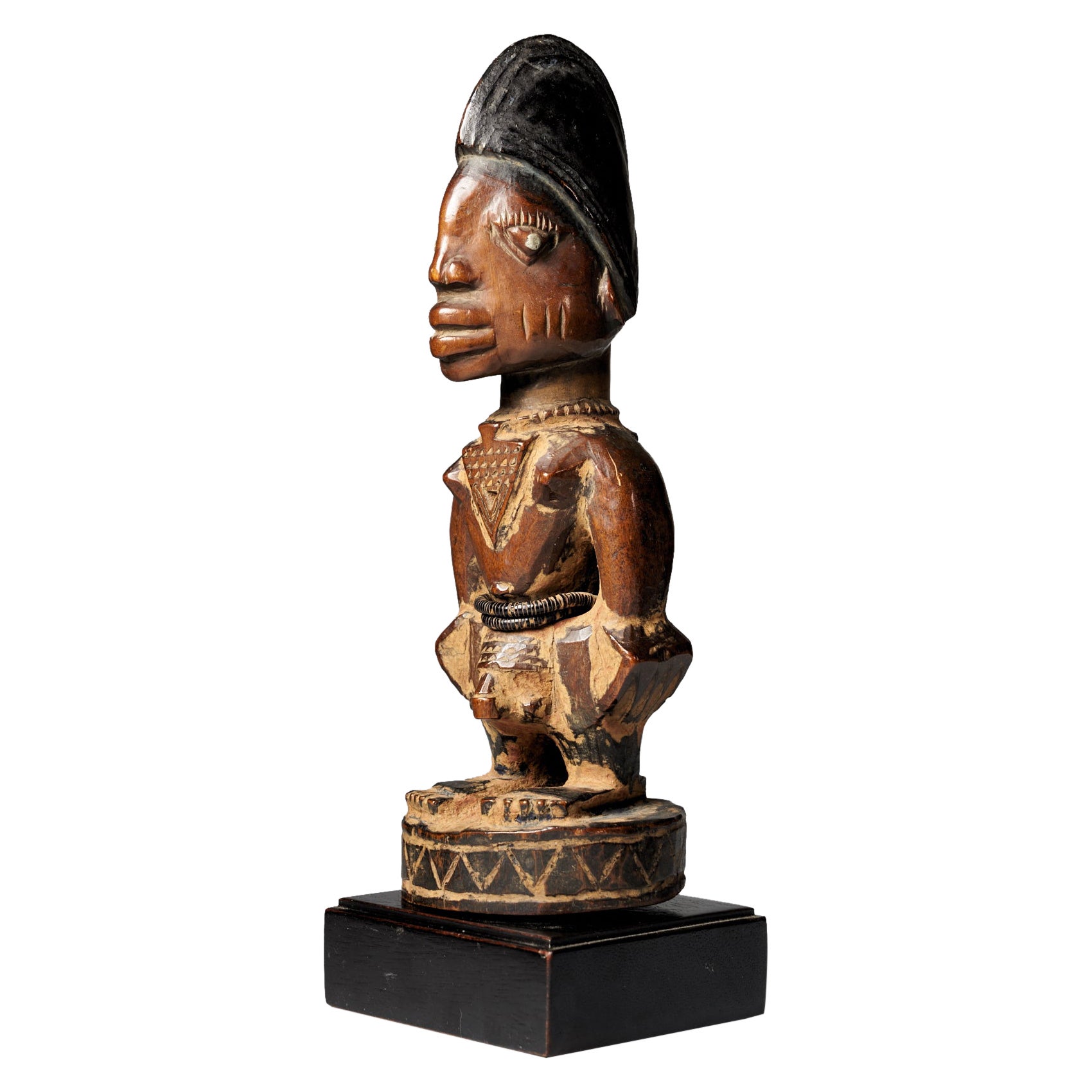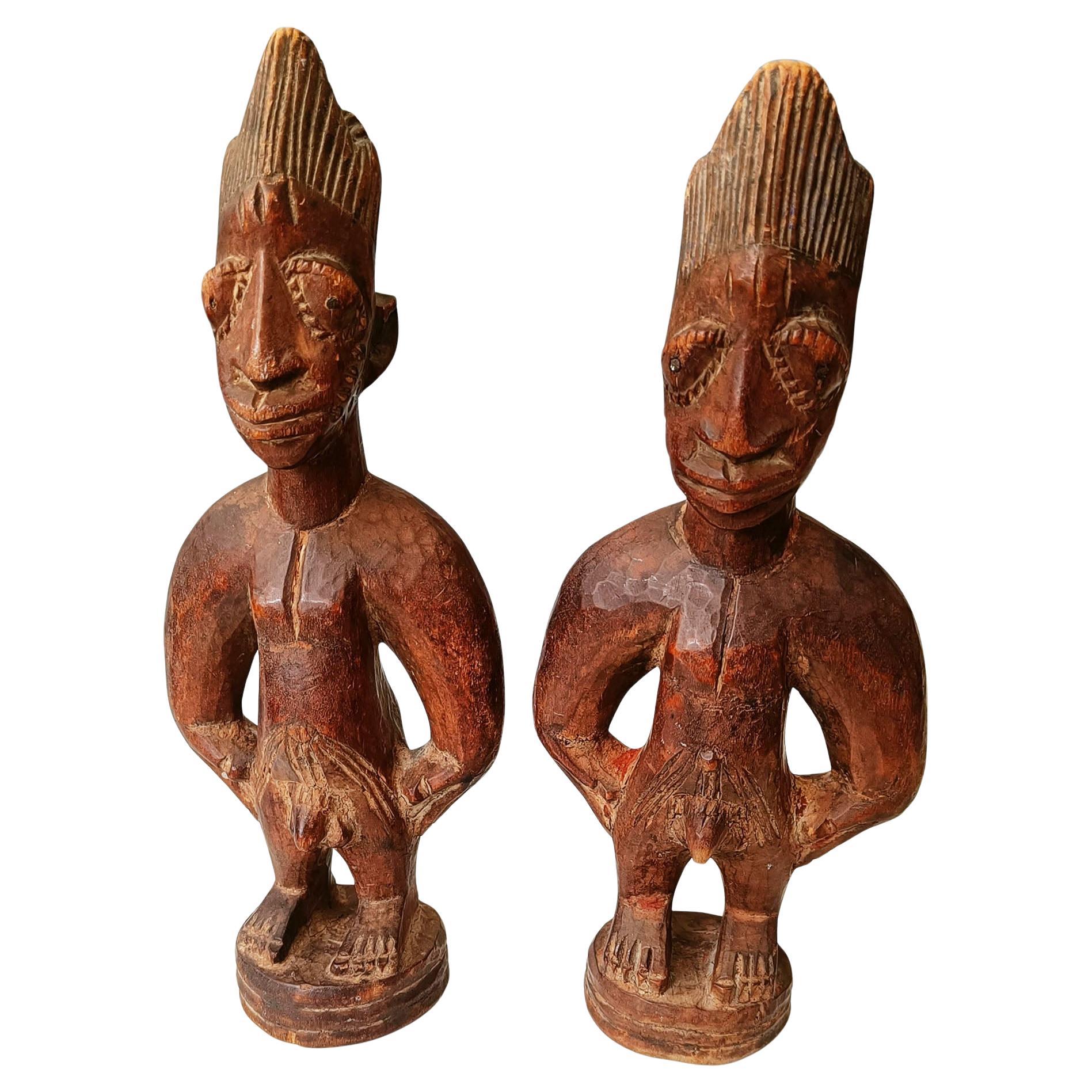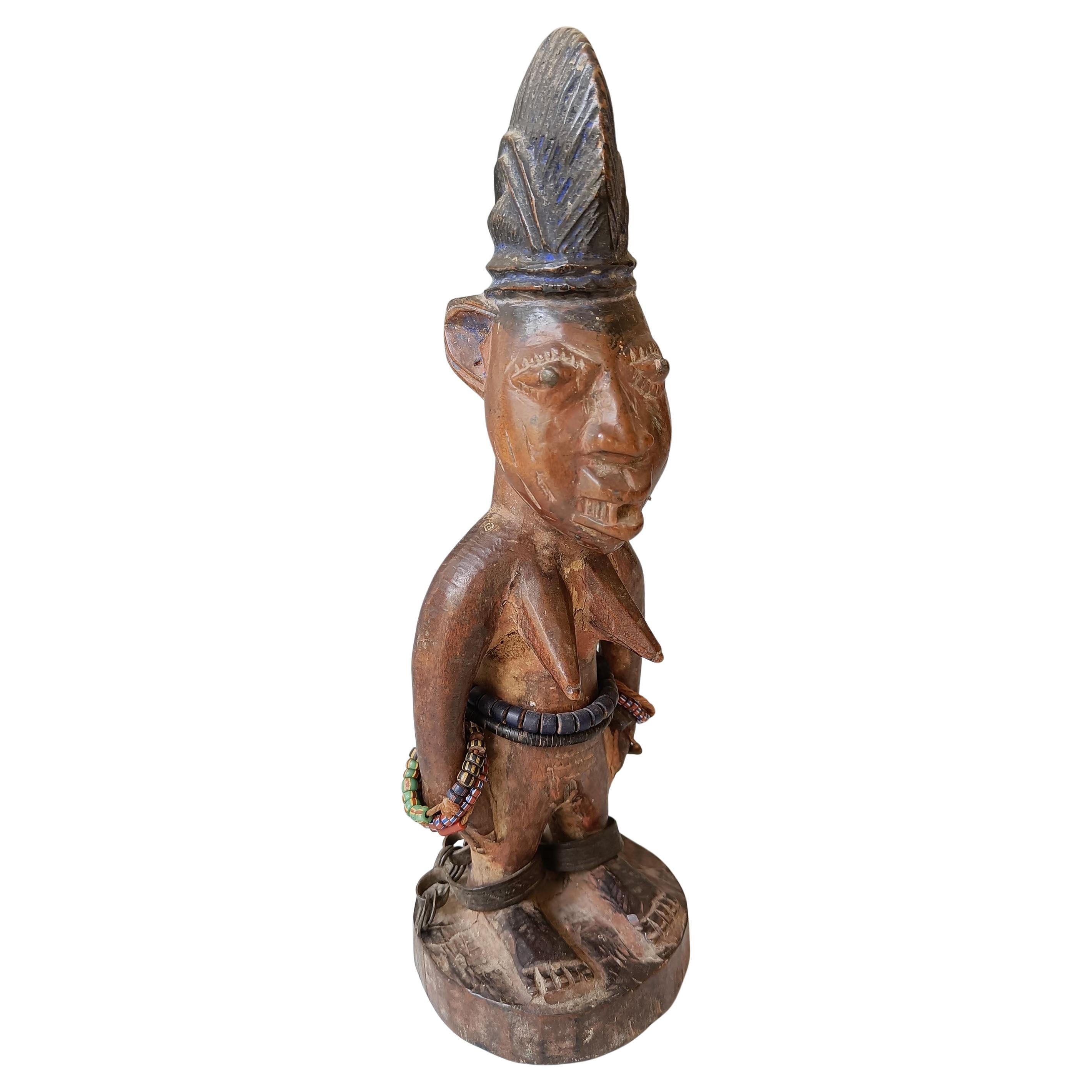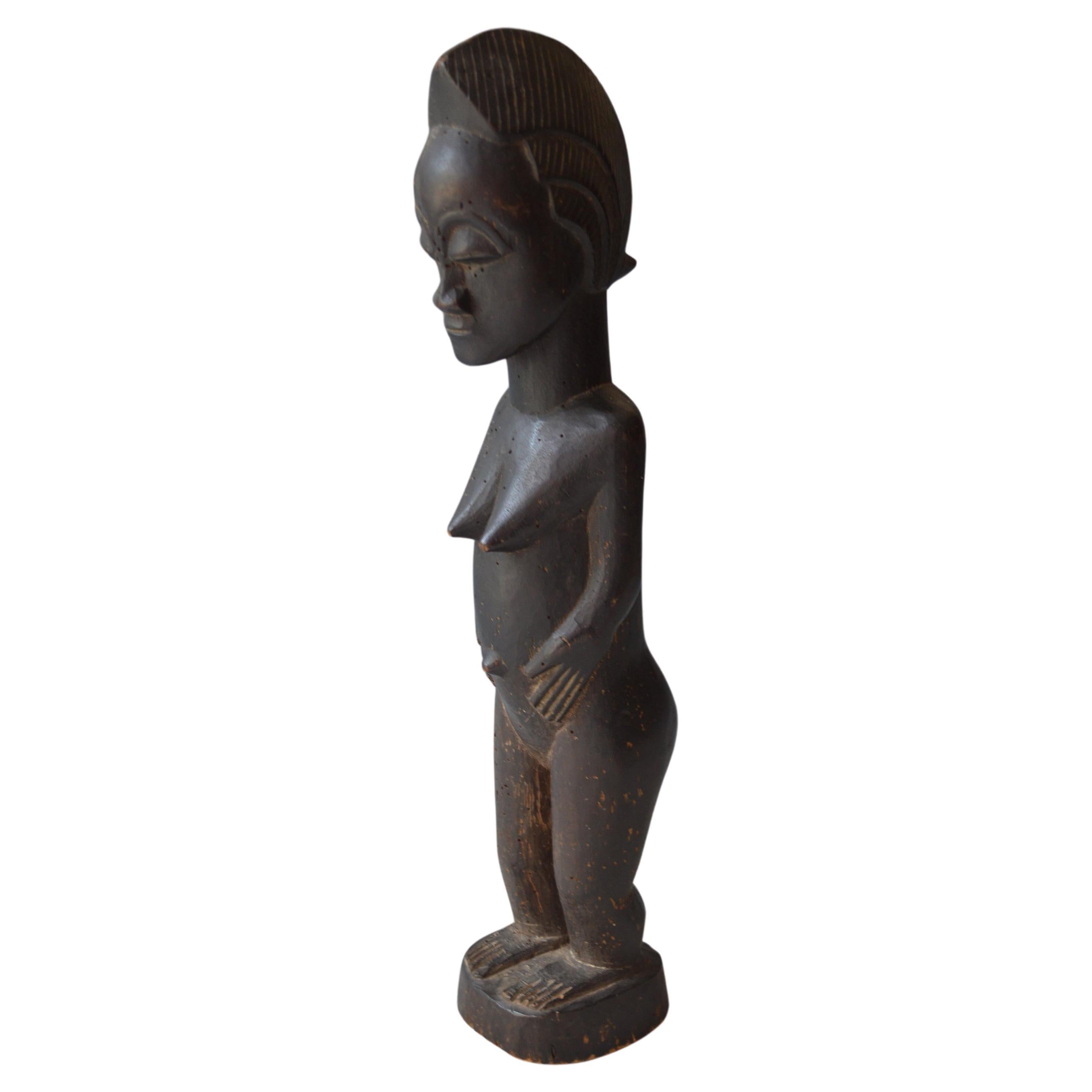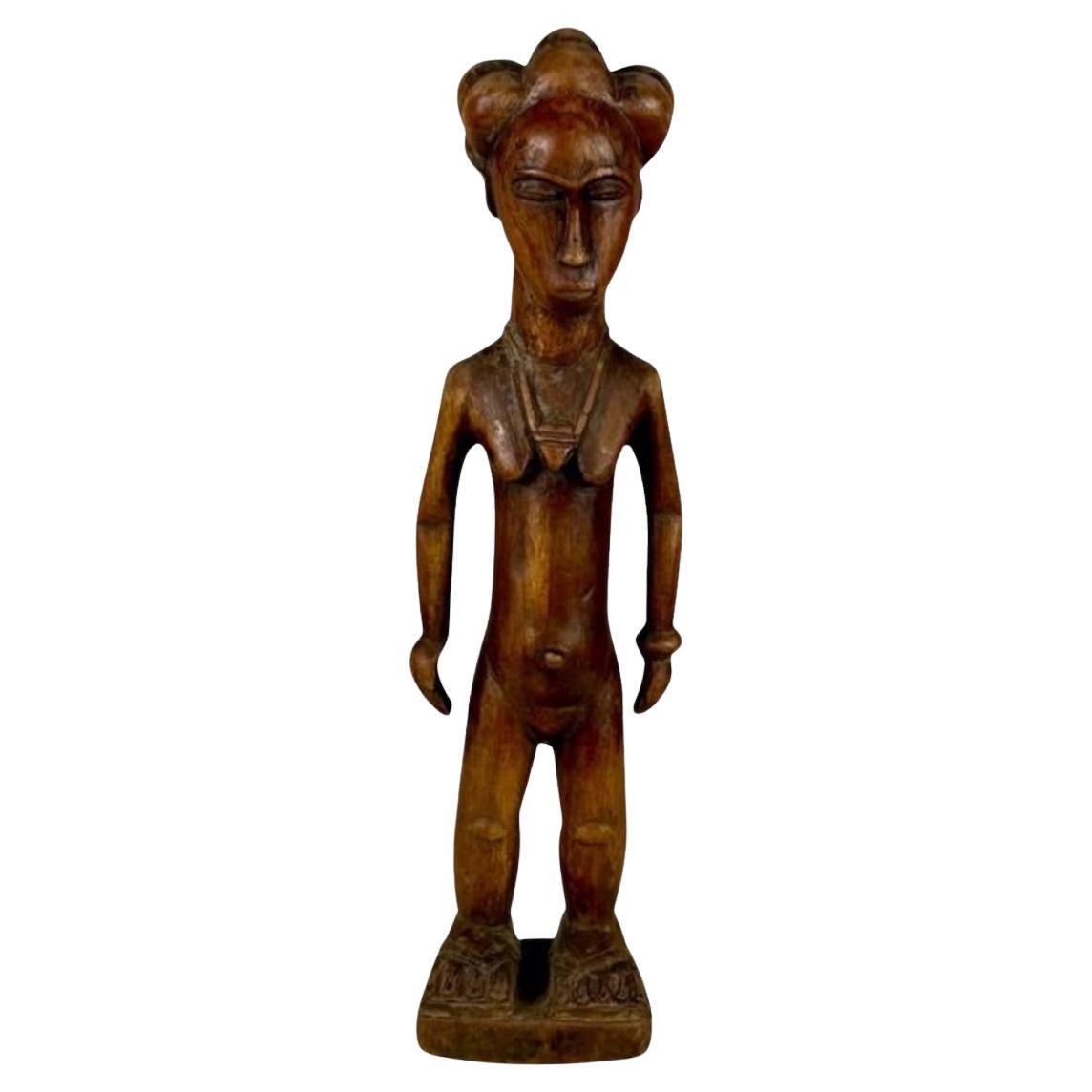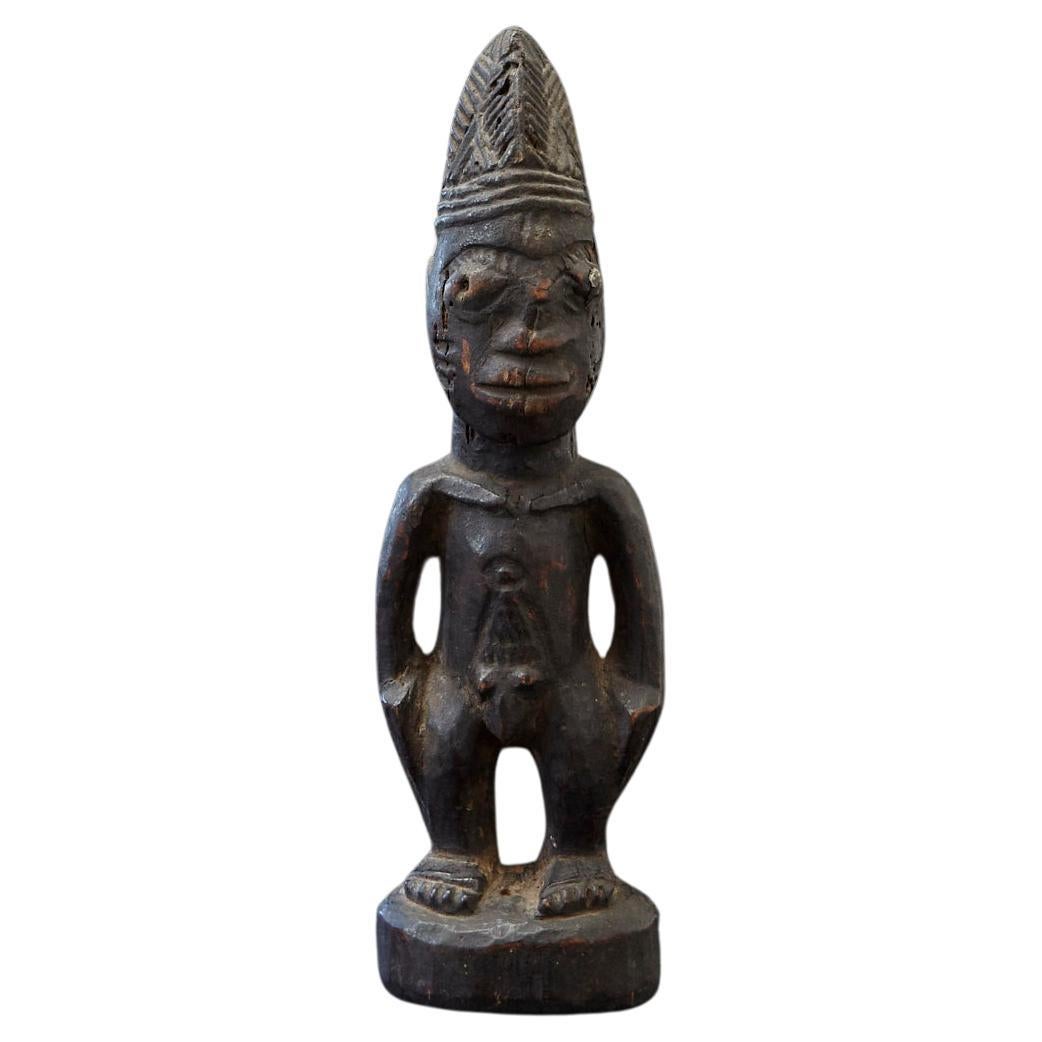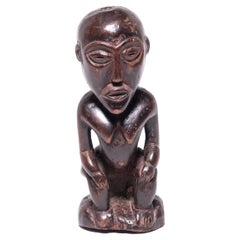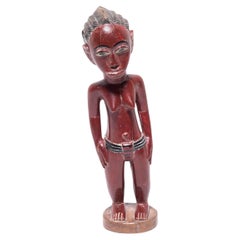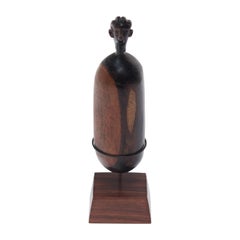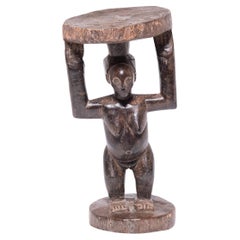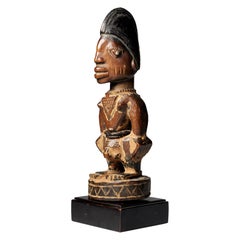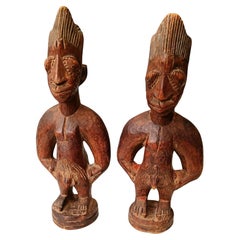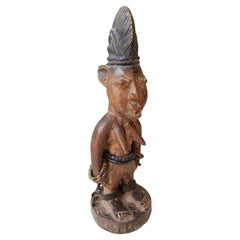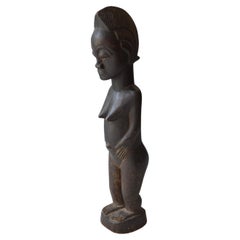Items Similar to Yoruba Ibeji Twin Figure
Want more images or videos?
Request additional images or videos from the seller
1 of 6
Yoruba Ibeji Twin Figure
$880
£668.08
€764.14
CA$1,229.49
A$1,367.46
CHF 714.04
MX$16,640.52
NOK 9,119.44
SEK 8,552.42
DKK 5,703.09
Shipping
Retrieving quote...The 1stDibs Promise:
Authenticity Guarantee,
Money-Back Guarantee,
24-Hour Cancellation
About the Item
With one of the highest rates of twin births in the world, Yoruba cultures place special social and religious significance on twins, referred to as "emi alagbara" or "powerful spirits." Believed to be destined as deities, twins are honored in life and thought to bring wealth to their parents. On the occasion of the death of a twin, a memorial figure called an "ere ibeji" is commissioned by the mother to embody the spirit of her child. The figure is then affectionately cared for during an indefinite mourning period and dressed in beads and cowrie shells. With poised statures, composed expressions, and intricate hair and attire, ibeji figures such as this are celebrations of Yoruba culture and affirmations of life and legacy.
- Attributed to:Yoruba People (Artist)
- Dimensions:Height: 10 in (25.4 cm)Width: 3 in (7.62 cm)Depth: 3 in (7.62 cm)
- Style:Tribal (In the Style Of)
- Materials and Techniques:
- Place of Origin:
- Period:
- Date of Manufacture:Mid-20th Century
- Condition:Wear consistent with age and use. Minor losses. Minor fading.
- Seller Location:Chicago, IL
- Reference Number:Seller: CAA07261stDibs: LU820036774272
About the Seller
5.0
Platinum Seller
Premium sellers with a 4.7+ rating and 24-hour response times
Established in 1997
1stDibs seller since 2006
1,693 sales on 1stDibs
Typical response time: 1 hour
- ShippingRetrieving quote...Shipping from: Chicago, IL
- Return Policy
Authenticity Guarantee
In the unlikely event there’s an issue with an item’s authenticity, contact us within 1 year for a full refund. DetailsMoney-Back Guarantee
If your item is not as described, is damaged in transit, or does not arrive, contact us within 7 days for a full refund. Details24-Hour Cancellation
You have a 24-hour grace period in which to reconsider your purchase, with no questions asked.Vetted Professional Sellers
Our world-class sellers must adhere to strict standards for service and quality, maintaining the integrity of our listings.Price-Match Guarantee
If you find that a seller listed the same item for a lower price elsewhere, we’ll match it.Trusted Global Delivery
Our best-in-class carrier network provides specialized shipping options worldwide, including custom delivery.More From This Seller
View AllAfrican Seated Luba Figure
Located in Chicago, IL
Artisans from the Luba tribe were renowned for the organic flow of their carving style. This example clearly shows the smooth transition from aspect to aspect, maintaining a singular...
Category
Mid-20th Century Congolese Tribal Tribal Art
Materials
Wood
Painted Baule Blolo Bla Figure
By Baule Tribe
Located in Chicago, IL
The figurative sculptures of the Baule peoples of Cote d'Ivoire are recognizable by their strong, gently curving forms and serene composure. This figure of a woman was carved to repr...
Category
Mid-20th Century Ivorian Tribal Tribal Art
Materials
Wood
African Namji Fertility Figure
Located in Chicago, IL
Doted on like an actual child, this carved doll was once owned by a young girl among the Namji people of northwest Cameroon. Carted around by its owner wherever she went and lovingly...
Category
Mid-20th Century Cameroonian Tribal Figurative Sculptures
Materials
Wood
African Luba Caryatid Stool
Located in Chicago, IL
This stool by the Luba people of Zaire is indicative of their classic style. A single tree trunk was carved into a column, then further taken in until the robust figure of a woman ap...
Category
Mid-20th Century Congolese Tribal Stools
Materials
Wood
Benin-Style Bronze Figural Pipe Mouthpiece
Located in Chicago, IL
World-renowned for high-quality lost wax casting, the city of Benin in West Africa has been a leading producer of fine cast brass and bronze sculptures since as early as the 16th cen...
Category
Antique Late 19th Century Nigerian Folk Art Sculptures and Carvings
Materials
Bronze
Bambara Ci Wara Headdress Sculpture
Located in Chicago, IL
Carved to honor the mythical being Ci Wara, a Bambara deity that’s half mortal and half animal, this wooden headdress combines the graceful head and horns of a...
Category
Mid-20th Century Malian Tribal Abstract Sculptures
Materials
Wood
You May Also Like
Carved Twin figure Ibeji Yoruba People, Nigeria
Located in Leuven , BE
A finely carved significant Yoruba Male Ibeji figure with a tall headdress, expressive eyes, original bead belt and heavy wear and polish from native use. Areas of encrusted camwood ...
Category
20th Century Nigerian Tribal Art
Materials
Wood
Yoruba Ibeji Twin Figures – Igbuke Workshop Oyo Nigeria African Tribal Art
Located in London, GB
African tribal art.
Fine old male and female pair of Yoruba Ibeji Figures from the Igbuke carving workshop in Oyo.
Igbuke was a known carver of Ibeji figures and this style is attri...
Category
Early 20th Century Nigerian Tribal Art
Materials
Hardwood
Fine Female Yoruba Ibeji Figure African Tribal Art Antiques
Located in London, GB
African tribal Art Antiques Female Ibeji figure Yoruba Nigeria
A Finely carved Ibeji Figure from early 20th century, with delineated teeth and l...
Category
Early 20th Century Nigerian Tribal Art
Materials
Hardwood
African Tribal Art Fine Baule figure
Located in London, GB
A fine Baule female figure
Standing leaning forward with serene expression with hands on abdomen
Period: early 20th century
Condition: Old Insect holes and minor damage
Measures: H ...
Category
Early 20th Century Ivorian Tribal Art
Materials
Wood
Figura tribal africana Baule
Located in VALÈNCIA, ES
Figura tribal africana de origen, Senegal o Costa de Marfil
Category
Vintage 1940s Senegalese Tribal Tribal Art
Materials
Wood
$402 Sale Price
30% Off
Ere Ibeji Male Commemorative Figure, Yoruba People, Nigeria, early 20th C
By Yoruba People
Located in Aramits, Nouvelle-Aquitaine
Yoruba people have one of the highest incidents of twin births in the world. As a result, twin children are regarded as extraordinary, divine beings protected by Sango, the deity of ...
Category
Early 20th Century Nigerian Tribal Tribal Art
Materials
Wood
